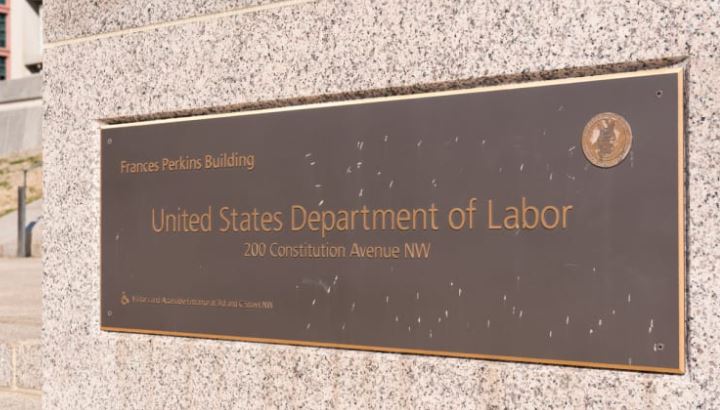Employers are waiting to see whether the U.S. Department of Labor (DOL) will issue guidance requested by President Joe Biden clarifying that workers who refuse unsafe working conditions can still receive unemployment insurance.
Biden made this request in a fact sheet accompanying Executive Order 14002, Economic Relief Related to the COVID-19 Pandemic, on Jan. 22.
“The executive order does not explicitly call for unemployment insurance payments for employees that refuse work due to health and safety concerns,” noted Ruth Zadikany, an attorney with Mayer Brown in Los Angeles. As of Feb. 11, the DOL had yet to release any guidance on the subject.
“Many employers are rightly worried that if the DOL were to follow President Biden’s direction, employees would be able to subjectively decide on their own when they can refuse work,” said Erin McAdams Franzblau, an attorney with Freeborn & Peters in Chicago. This would mean “an employer could suddenly lose a significant portion of its workforce because employees incorrectly decided working conditions were unsafe.”
If the guidance is issued, state unemployment offices would face an administrative nightmare in determining whether employees appropriately refused unsafe working conditions, she added.
“A better approach would be to continue allowing the state unemployment offices to determine eligibility,” she said. For example, while Illinois employees are not automatically eligible for unemployment based on subjectively believing a workplace is unsafe and refusing work, the Illinois Department of Employment Security may consider the degree of risk involved to an employee’s health and safety and his or her physical fitness and prior training.
Unemployment insurance is primarily a state function, and each state can set its own rules and procedures, noted Rob Duston, an attorney with Saul Ewing Arnstein & Lehr in Washington, D.C.
“It does not appear that the DOL has any authority to require states to change the terms of their eligibility for unemployment insurance,” he said. “It is also unclear whether the DOL could implement the president’s proposal regarding extended benefits without congressional authorization. The DOL probably would have the authority to provide guidance or suggested language if states wanted to make exceptions to eligibility.”
“We need to wait and see,” Franzblau said. The DOL “may not even issue regulations or guidance on this proposal, and instead we may see states bolstering their unemployment criteria to more explicitly encompass employees who refuse unsafe working conditions.” If the DOL issues guidance, employers will need to ensure they are following all direction on creating safe workplaces so that they can contest unemployment applications if necessary, she added.
Current Standards
If an employer is going to take the position that an employee is unreasonably refusing to return to work, it should be confident in its ability to demonstrate that it uses safety protocols and standards that, at a minimum, meet Occupational Safety and Health Administration (OSHA) guidelines, said Jacqueline Voronov, an attorney with Hall Booth Smith in Saddle Brook, N.J.
According to the current OSHA guidelines for refusing dangerous work, an employee has the right to refuse work if all of the following conditions are met:
- Where possible, the employee has asked the employer to eliminate the danger, and the employer failed to do so.
- The employee refused to work in good faith. This means that the employee must genuinely believe that a reasonable apprehension of death or serious injury exists.
- A reasonable person would agree that there is a real danger of death or serious injury.
- There is not enough time, due to the urgency of the hazard, to get it corrected through regular enforcement channels, such as requesting an OSHA inspection.
“If these circumstances do not exist at the time the employee refuses work, then an employer should consider whether it wishes to contest the unemployment insurance claim,” said Andy Rosenman, an attorney with Mayer Brown in Chicago.
The employer also will need to determine how to respond to the employee’s continuing absence from work and whether disciplinary action may be warranted. Disciplinary action “may result in claims of wrongful termination based on public policy, retaliation and other causes of action,” he cautioned.
Section 11(c) of the Occupational Safety and Health Act prohibits discrimination or retaliation against an employee for speaking out about unsafe working conditions.
“Employers also need to think through employee morale issues and public relations impacts of claims by employees that their workplace is unsafe, even if such claims may prove to be completely unfounded,” Rosenman said.
To help employees feel safe, employers should review OSHA’s new guidance on workplace safety during the COVID-19 pandemic and implement as many of the recommended measures as they can, Zadikany said. “This is highly recommended as, according to Executive Order 13999, OSHA is considering new temporary emergency standards on COVID-19,” she noted.
Communication
“Employers should also take seriously any reports by employees, vendors or other visitors of any health and safety protocols,” Zadikany added. “Employers should document and investigate all such safety-related complaints and follow up with employees after the employer has investigated and, as applicable, remediated the concern.”
“Communication is critical,” Rosenman said. In light of the pandemic, many employees have heightened concerns about returning to work, especially while the rollout of vaccinations is just underway.
“Employers should be sensitive to their employees’ concerns,” he said. “They should also proactively and repeatedly communicate about the steps they have taken—and continue to take—to make the workplace safe for their employees.”
For example, an employer could describe the guidelines that OSHA and state and local authorities have recommended as applied to its workplace and articulate how the employer is complying with those standards. Doing so should not only help to build confidence within the workforce but it also will create documentary evidence of the steps that the employer took to educate its staff in a thoughtful and transparent manner, Rosenman said.
